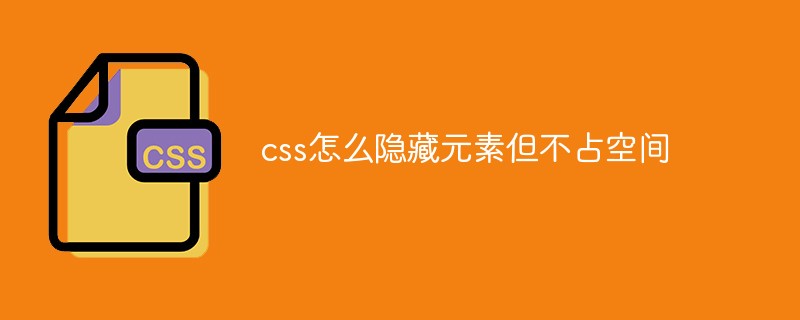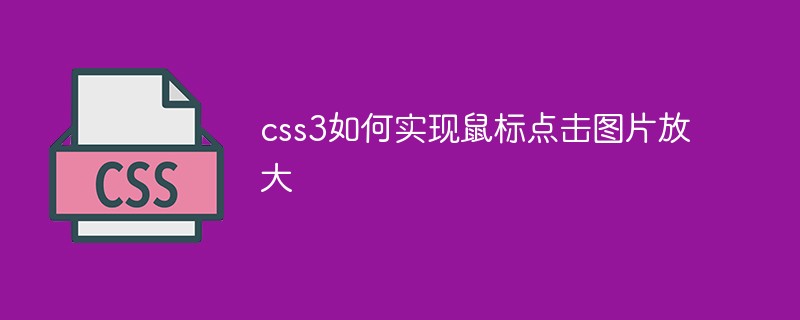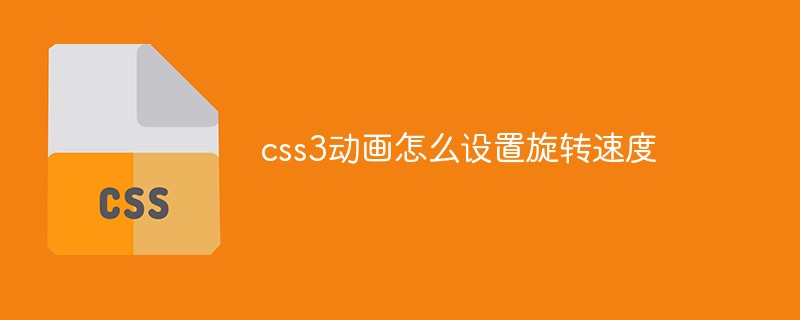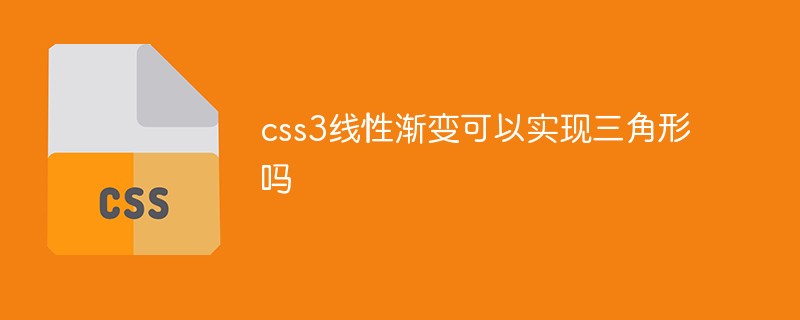 Web Front-end
Web Front-end CSS Tutorial
CSS Tutorial What are the uses of CSS3's :out-of-range and :in-range pseudo-classes? (code example)
What are the uses of CSS3's :out-of-range and :in-range pseudo-classes? (code example)The content of this article is to introduce to you the use of CSS3’s :out-of-range and :in-range pseudo-classes? (code example), let everyone understand the functions and usage of :out-of-range pseudo-class and :in-range pseudo-class. It has certain reference value. Friends in need can refer to it. I hope it will be helpful to you.
css3 :in-range pseudo-class
:in-range pseudo-class selector, used to bind elements with a range when the value is within the specified range limit Restricted elements are styled.
In other words, when the value attribute value of the elements it matches is within its specified range limit, it can set the style of these matching elements.
css3 :out-of-range pseudo-class
:out-of-range pseudo-class selector, used to specify when the effective value of the element is limited to a period The style used when the actual input value is within the range (use the min and max attributes to specify the range), but the actual input value is outside the range.
Note: : The in-range pseudo-class selector and the out-of-range pseudo-class selector only act on elements that can specify interval values; It is not possible to select any other element that does not have a data range limit or is not a form control element. For example, the min and max attributes in the input element:
<input type="number">
Such an input will have a range of acceptable values specified using the min and max attributes. The value attribute will hold the current value of the input.
< input type = “number” min = “1” max = “10” value = “8” >
Note:
Like other pseudo-class selectors, :in-range pseudo-classes and :out-of-range can be used with other selections Use together with selectors, such as :hover and :focus selectors. When the value of the element is within the allowed range limit, a hover style is provided for the element; when the value of the element exceeds the allowed range limit, a hover style is provided for the element. Focus style.
input:in-range:hover {
cursor: help;
}
input:out-of-range:focus {
border: 2px solid tomato;
}css3 Examples of :in-range pseudo-class and :out-of-range pseudo-class:
The following examples use:out- The of-range and :in-range pseudo-class selectors style the input when the supplied value is within or outside the specified range. Try entering a value outside the specified range to see if the style of the input changes.
html code:
<div class="container"> <p>值在1和10以内是,样式为绿色;但只要值在1和10之外,样式将是红色的。尝试将值更改为WITIN范围的值,以查看其样式更改。</p> <input id="range" type="number" min="1" max="10" value="12"> <label for="range"></label> </div>
css code:
body {
background-color: #F5F5F5;
color: #555;
font-size: 1.1em;
font-family: 'Helvetica Neue', Helvetica, Arial, sans-serif;
}
.container {
margin: 40px auto;
max-width: 700px;
}
input {
width: 100px;
height: 40px;
font-size: 1.4em;
margin-right: .6em;
}
input[type="number"]:in-range {
background-color: lightgreen;
color: green;
}
input:in-range + label::after {
content: "请输入一个介于1和10之间的值!";
}
input[type="number"]:out-of-range {
background-color: salmon;
border: 1px solid tomato;
color: white;
}
input:out-of-range + label::after {
content: "此值超出范围,请重新输入!";
color: tomato;
}Running effect:

We use the :in-range pseudo-class selector to select and set the value in the range of 1 to 10. When the value is in the range of 1 to 10, the style is green; but when the value is outside 1 to 10, the style is red as a warning reminder.
Summary: The above is the entire content of this article, I hope it will be helpful to everyone's study. Recommended related video tutorials: css3 tutorial!
The above is the detailed content of What are the uses of CSS3's :out-of-range and :in-range pseudo-classes? (code example). For more information, please follow other related articles on the PHP Chinese website!
 css怎么隐藏元素但不占空间Jun 01, 2022 pm 07:15 PM
css怎么隐藏元素但不占空间Jun 01, 2022 pm 07:15 PM两种方法:1、利用display属性,只需给元素添加“display:none;”样式即可。2、利用position和top属性设置元素绝对定位来隐藏元素,只需给元素添加“position:absolute;top:-9999px;”样式。
 原来利用纯CSS也能实现文字轮播与图片轮播!Jun 10, 2022 pm 01:00 PM
原来利用纯CSS也能实现文字轮播与图片轮播!Jun 10, 2022 pm 01:00 PM怎么制作文字轮播与图片轮播?大家第一想到的是不是利用js,其实利用纯CSS也能实现文字轮播与图片轮播,下面来看看实现方法,希望对大家有所帮助!
 css3如何实现鼠标点击图片放大Apr 25, 2022 pm 04:52 PM
css3如何实现鼠标点击图片放大Apr 25, 2022 pm 04:52 PM实现方法:1、使用“:active”选择器选中鼠标点击图片的状态;2、使用transform属性和scale()函数实现图片放大效果,语法“img:active {transform: scale(x轴放大倍数,y轴放大倍数);}”。
 css3什么是自适应布局Jun 02, 2022 pm 12:05 PM
css3什么是自适应布局Jun 02, 2022 pm 12:05 PM自适应布局又称“响应式布局”,是指可以自动识别屏幕宽度、并做出相应调整的网页布局;这样的网页能够兼容多个不同的终端,而不是为每个终端做一个特定的版本。自适应布局是为解决移动端浏览网页而诞生的,能够为使用不同终端的用户提供很好的用户体验。
 css3动画效果有变形吗Apr 28, 2022 pm 02:20 PM
css3动画效果有变形吗Apr 28, 2022 pm 02:20 PMcss3中的动画效果有变形;可以利用“animation:动画属性 @keyframes ..{..{transform:变形属性}}”实现变形动画效果,animation属性用于设置动画样式,transform属性用于设置变形样式。
 css3怎么设置动画旋转速度Apr 28, 2022 pm 04:32 PM
css3怎么设置动画旋转速度Apr 28, 2022 pm 04:32 PM在css3中,可以利用“animation-timing-function”属性设置动画旋转速度,该属性用于指定动画将如何完成一个周期,设置动画的速度曲线,语法为“元素{animation-timing-function:速度属性值;}”。
 css3线性渐变可以实现三角形吗Apr 25, 2022 pm 02:47 PM
css3线性渐变可以实现三角形吗Apr 25, 2022 pm 02:47 PMcss3线性渐变可以实现三角形;只需创建一个45度的线性渐变,设置渐变色为两种固定颜色,一个是三角形的颜色,另一个为透明色即可,语法“linear-gradient(45deg,颜色值,颜色值 50%,透明色 50%,透明色 100%)”。
 一文了解CSS3中的新特性 ::target-text 选择器Apr 12, 2022 am 11:24 AM
一文了解CSS3中的新特性 ::target-text 选择器Apr 12, 2022 am 11:24 AM本篇文章带大家一起深入了解一下CSS3中的新特性::target-text 选择器,聊聊该选择器的作用和使用方法,希望对大家有所帮助!


Hot AI Tools

Undresser.AI Undress
AI-powered app for creating realistic nude photos

AI Clothes Remover
Online AI tool for removing clothes from photos.

Undress AI Tool
Undress images for free

Clothoff.io
AI clothes remover

AI Hentai Generator
Generate AI Hentai for free.

Hot Article

Hot Tools

Zend Studio 13.0.1
Powerful PHP integrated development environment

SublimeText3 English version
Recommended: Win version, supports code prompts!

Dreamweaver Mac version
Visual web development tools

ZendStudio 13.5.1 Mac
Powerful PHP integrated development environment

Dreamweaver CS6
Visual web development tools




